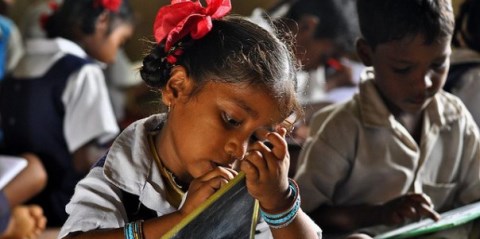ICTpost Education Bureau

Expressing concern that no Indian university featured among the top 200 global institutions, President Pranab Mukherjee has urged the country’s premier educational institutes to step up efforts to join the league of the best.
“I must convey my sense of dismay on seeing a recent report that not a single Indian university, including the premier Indian Institutes of Technologies (IITs), featuring in the 200 top-rated universities in the world,” said Mukherjee in his recent address.
“You may question the report but for me the important question is why are we – a rising economic superpower – not able to promote our standards to be rated indisputably among the top 10 or even top 50 or 100,” he said.
India’s seemingly unstoppable economic rise, an aspiring middle class’ desire to stand out in a competitive job market, and a lucrative opportunity for investors fuelled a bubble in business education that is now starting to deflate.
About 140 schools offering Master of Business Administration (MBA) courses are expected to close this year, as 35 percent of their places were vacant in 2016-17, up from 15-20 percent in 2006-07, a report by ICTpost found.
Quality
The Indian census indicates that about half of the adult population is unable to read or write. Unsurprisingly, literacy rates vary widely between states, and between genders. The northern Hindi-belt states, whose economic performance has been worse than that of western and southern states, have lower literacy rates. Female literacy varies from around 34 per cent in Bihar to 88 per cent in Kerala; male literacy varies between 60 per cent in Bihar and 94 per cent in Kerala. Rajasthan suffers the widest gender difference: female literacy stands at 44 per cent; male at 77 per cent. One of the main aims of education policy in the 1990s was to accelerate the progress of literacy and school attendance and to create an equitable system for girls, as had been planned by the Kothari Commission in 1964.
Student-teacher ratio
A challenge for improving the Indian education system is to improve the student teacher ratio. In India, this ratio is very high as compared to certain comparable countries in the world. For example, while in developed countries this ratio stands at 11.4, in case of India, it is as high as 22.0. It is even low in CIS (10.9), Western Asia (15.3), and Latin America (16.6) . This brings the necessity to recruit quality teachers and strengthen the teachers required to handle classes. I also feel that like in developed countries where students are given part-time teaching assignments; we can also explore such possibilities in technical/higher education to handle lower level classes. It is also expected to help the students in meeting their education expenses partially.
Innovations required The challenge of educating millions of young people implies that we need to scale up our educational efforts multi-fold despite having the largest number of higher education institutes in the world. Scaling up is not possible unless the students become successful, create value in the society and contribute back to their alma-mater or, better still, start new institutes of global standards themselves.
The country is showing consistency in economic growth pattern, leading the world in terms of information and technology, modernization various economic activities and pushing for higher share of industries and services sectors of the economy but there is one area which needs reform is education system?. While it is true that some investments are taking place in the country’s higher education system, we are yet to establish world class research facilities, recruiting profound academicians in universities/colleges/research institutions, etc. to sustain and forge lead in economic development. It is important to understand that countries like China, Singapore, South Korea, etc. are moving fast in investing in education system. Therefore, it is imperative that our educational institutions are equipped with the desired quality and standards which are essentials for transforming the younger workforce into productive ones. Needless to reiterate that in the higher education system focus on use of technology for effective learning by students also needs to be encouraged to have cutting edge over our competitors in the globalised world.
We need to recognize that the knowledge, skills and productivity of our growing young and dynamic work force forms the backbone of our economy. To reap the benefits of such a young work force, we need to implement the reforms in the education system and also bring forth new factors of production, namely knowledge, skills and technology which have the ability to unleash the productive frontiers of the economy in the most efficient and dynamic way. Besides, taking a leaf from the western hemisphere, India should try to become knowledge economy to promote inclusive growth. editor@ictpost.com







